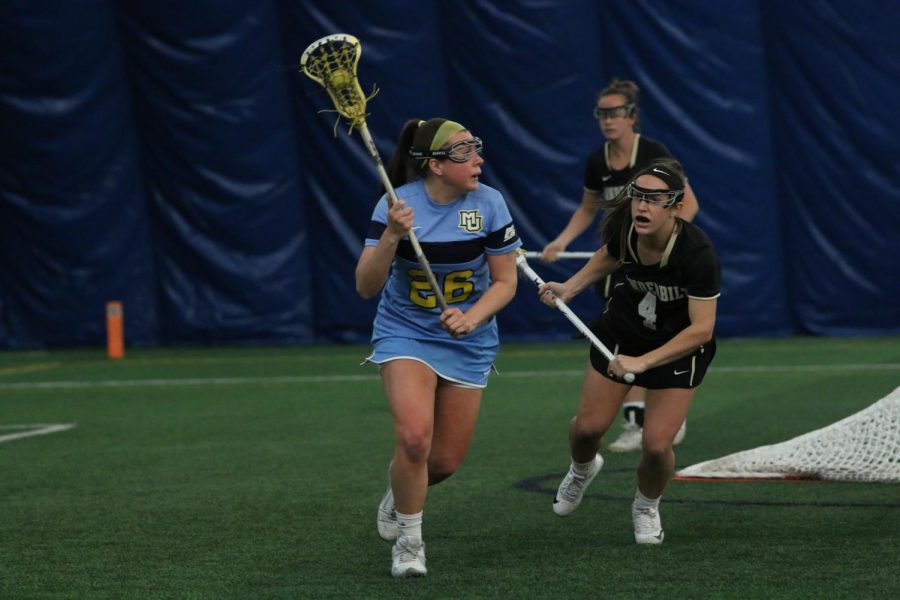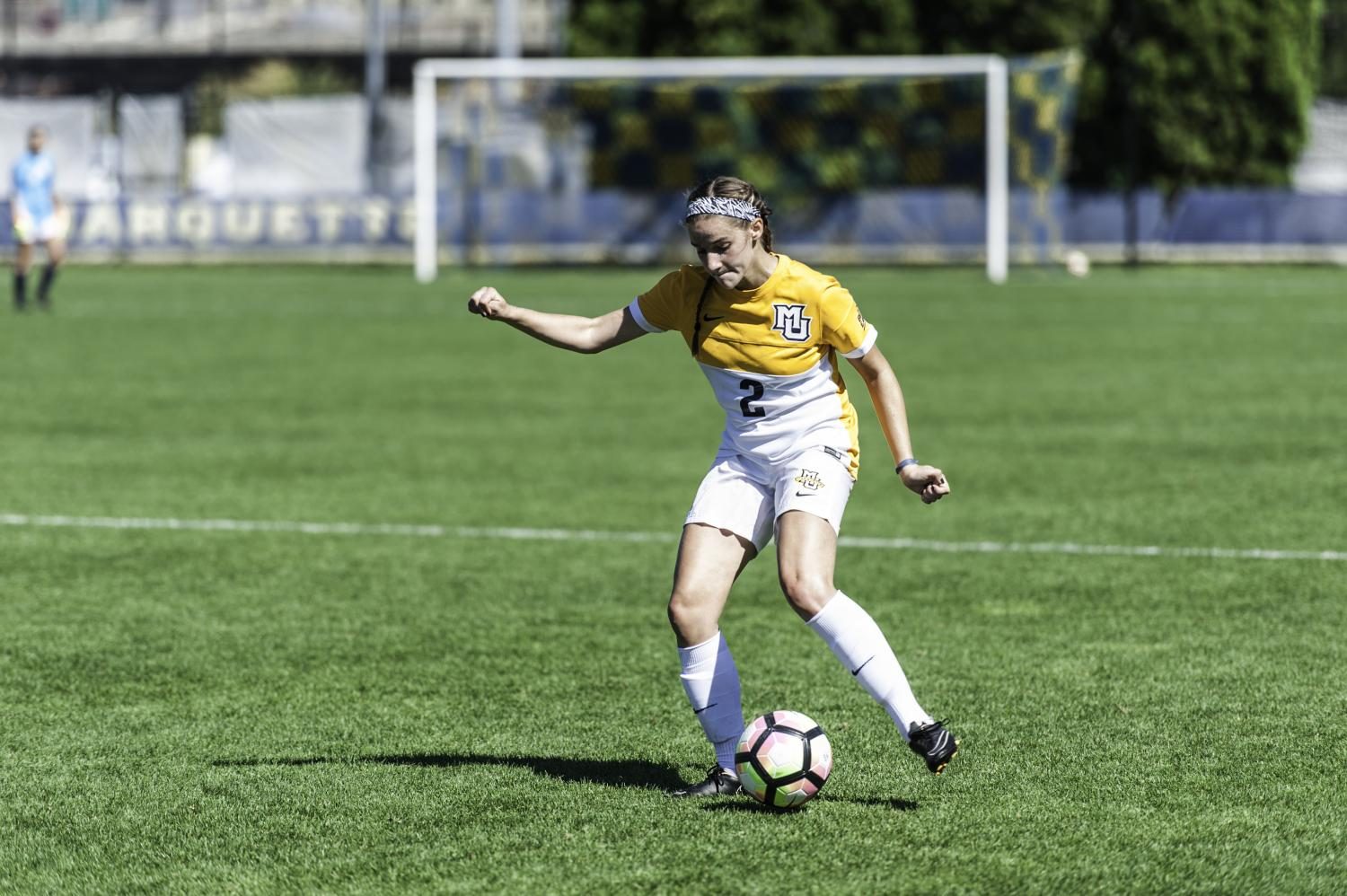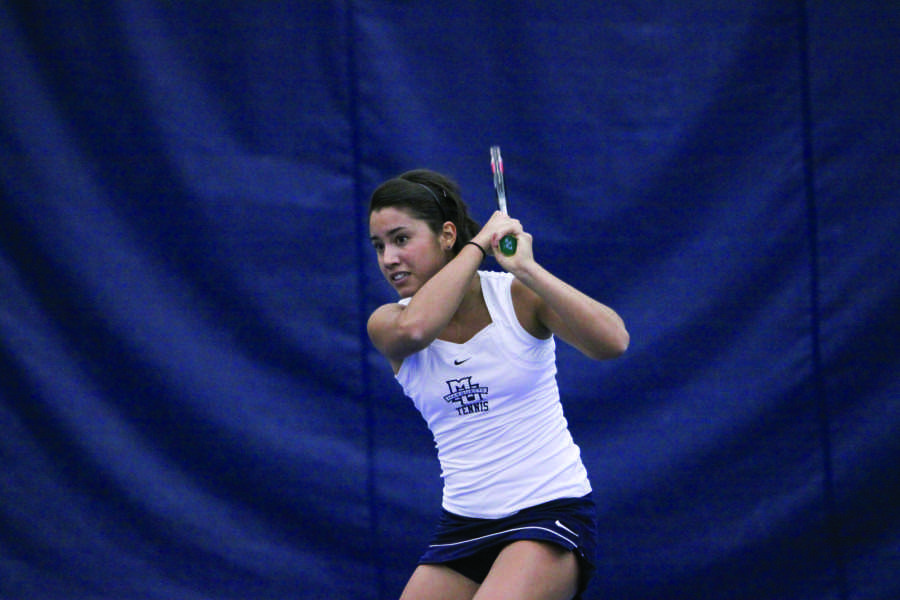 Bounce, bounce. Pause. Bend, toss, elevate. Destroy.
Bounce, bounce. Pause. Bend, toss, elevate. Destroy.
Those are not the dance steps to Gen. Larry Platt’s “Pants on the Ground” but the process by which a tennis player unleashes a wicked first serve on an unlucky opponent.
Service is everything in tennis. It controls the flow of a point, and when it is executed well, puts an opponent on the defensive from the start with little hope of regaining the upper hand. And when it’s done right, it’s pretty awesome to watch.
[youtube]8uXUymPvBbQ[/youtube]
“It’s the most important thing to a tennis player,” said sophomore Jonathan Scherwin, who boasts one of the fiercest serves on the Marquette men’s tennis team. “If you break serve on the college level, it’s just so difficult (to recover). Basically, it sets you up for the rest of the point.”
Which is why it’s important to get that first one in with some velocity. Not only does it put the pressure on your opponent, but it takes the tension off of you, not having to worry about the second serve, a get-it-in type of ball that is more easily pounced on.
There are two basic types of serves in tennis, and they are pretty straightforward. The first is a power serve, a flatter shot which is all business. Or you can go with an off-speed, slicing serve, which sends an opponent left or right, dashing for the ball. But there’s a consensus on which serve to go with when you’re in the zone.
“If I feel like my serve is really on, I’m going to go with the big serve every time,” said freshman Jacob Straus, who leads the team with a 16-3 record in dual meet and tournament play. “I’ve been on the other end of the stick where I’m playing somebody and it feels like I can’t get him and you have no rhythm. It takes the racket right out of the opponent’s hands.”
Then there are the serves that make you smile like you’re watching an all-day marathon of “Cops.” Flawless execution. A laser beam, smacked just out of the opponent’s reach. Impossible to defend. Ace.
“It’s pretty hard to ace people at this level, so when you do, you’ve got to enjoy it,” Scherwin said.
Which is why I asked coach Steve Rodecap if I could try returning some of Straus and Scherwin’s killer serves. Because they need easier people to ace against, you see.
Armed with coach Rodecap’s lucky racket, I strode to the far baseline as they wheeled a bucket of balls over and stood there, quite menacingly I might add. And it was at that point I realized I hadn’t played tennis in years. And that I was in big trouble. What was I doing?
I wanted to let the first one go by so I could gauge the speed of it and how quickly I would have to react — you know, like taking the first pitch in batting practice. The ones taking batting practice, however, were on the other side of the net, and I was like the ball shagger at the driving range minus the football helmet and the mattress. Sure enough, the very first screamer came right at me and bit me in the side. It’s OK though, only my pride was damaged.
“The flat serve is more of a power serve, and I’m just trying to hit it as hard as I can,” Scherwin said. “Right out of the guy’s way, or right at him if he’s not as mobile.”
So you’re saying I’m not mobile. Gee, thanks.
You can take a guess at how the rest of my practice session went. Not well. I spent most of the time ducking for cover and swinging defensively. After what seemed like an eternity, I was finally able to get around on a fastball and it dropped pathetically over the other side of the net in bounds. And with that, I raised my arms triumphantly and retired.
Score: Straus/Scherwin: 4,000. Grover: 15.
Zero bruises. I’ll take it.





